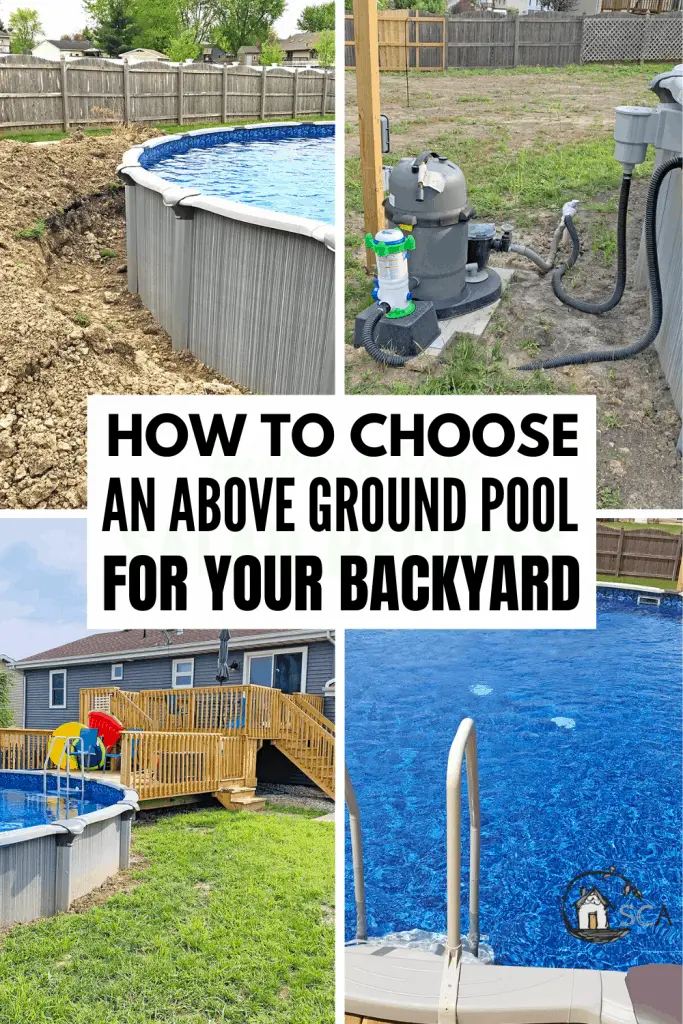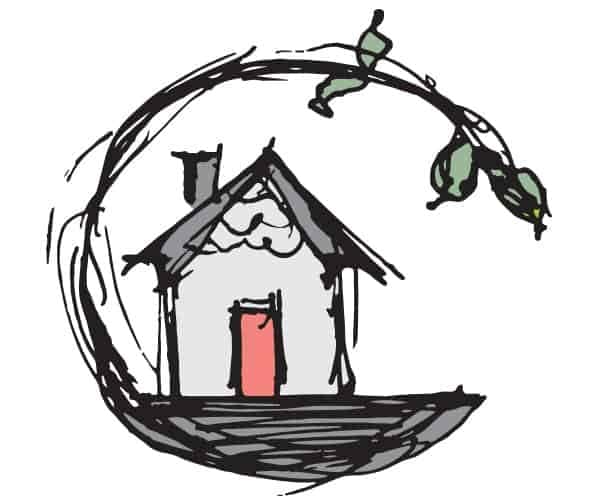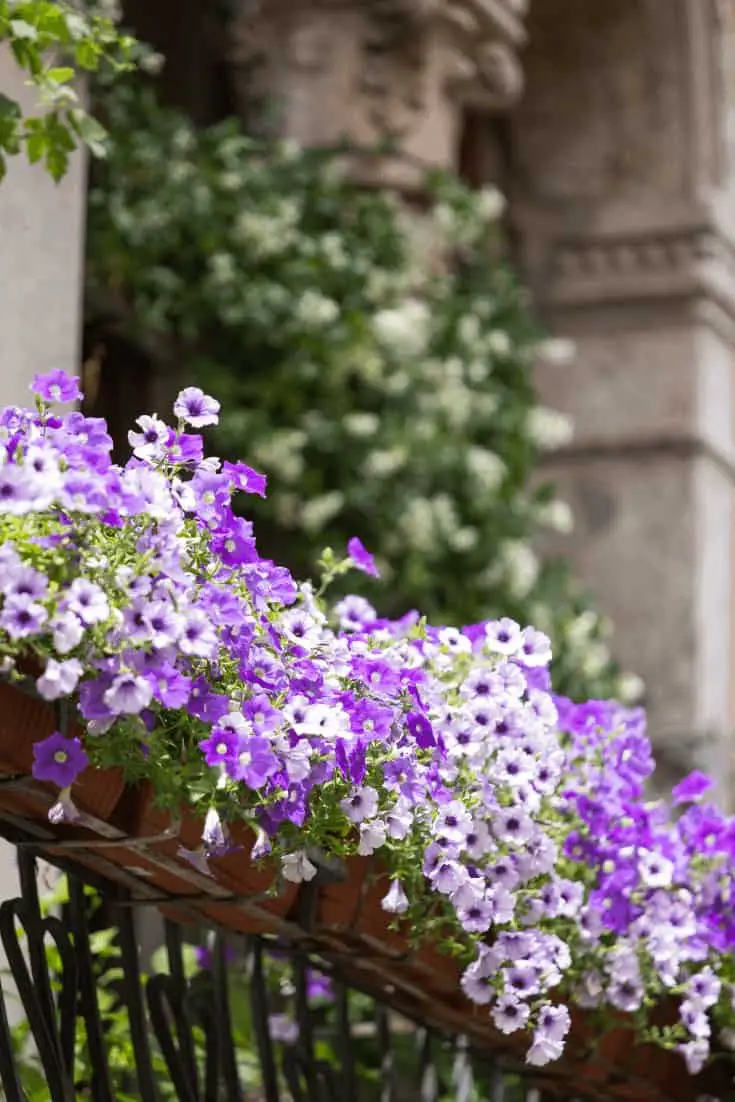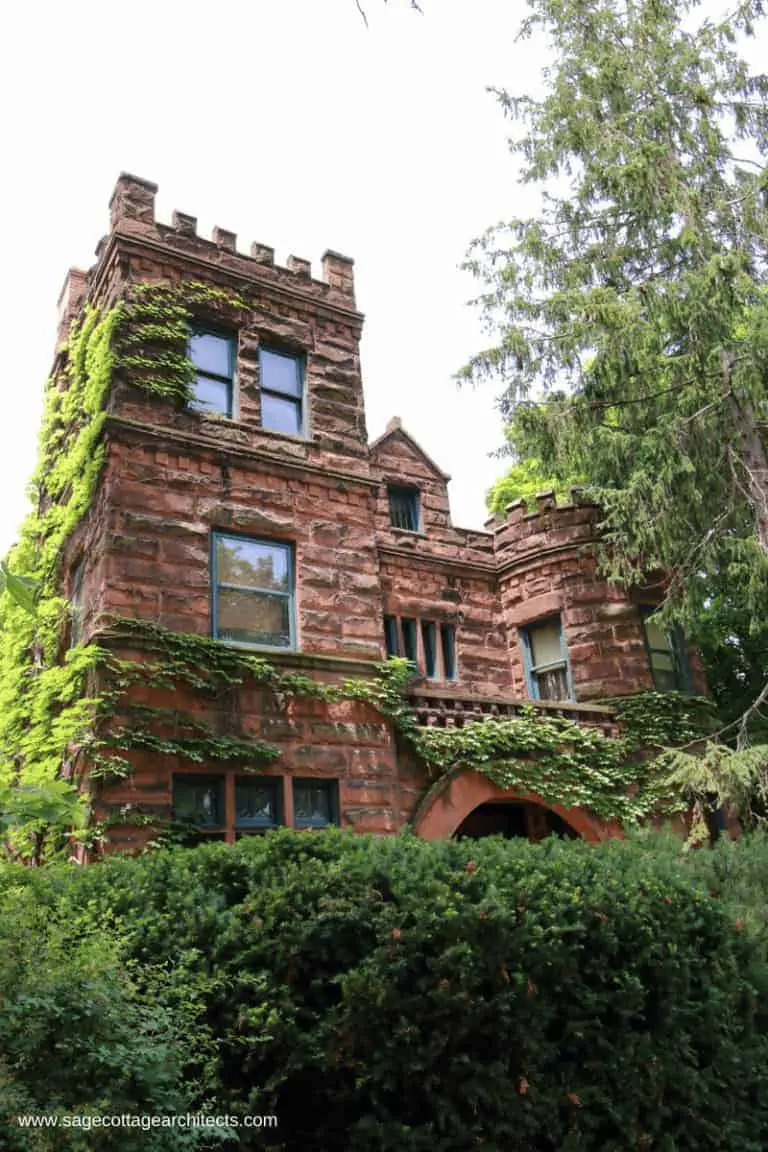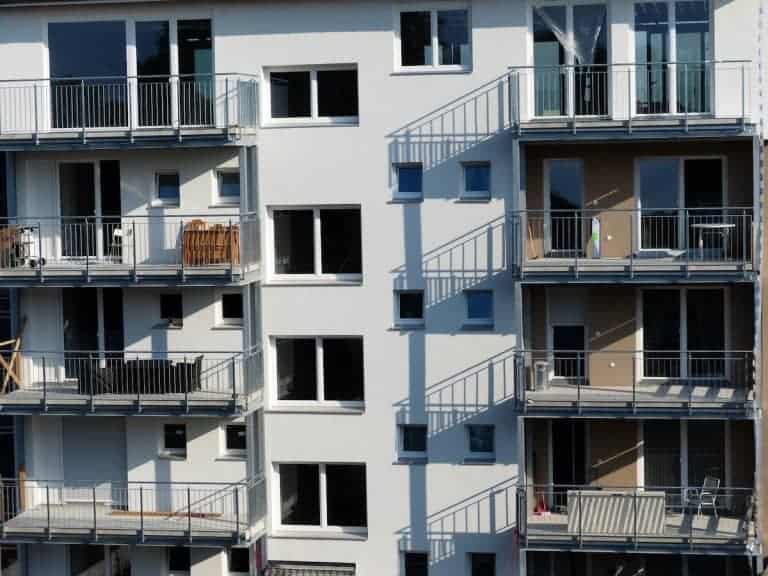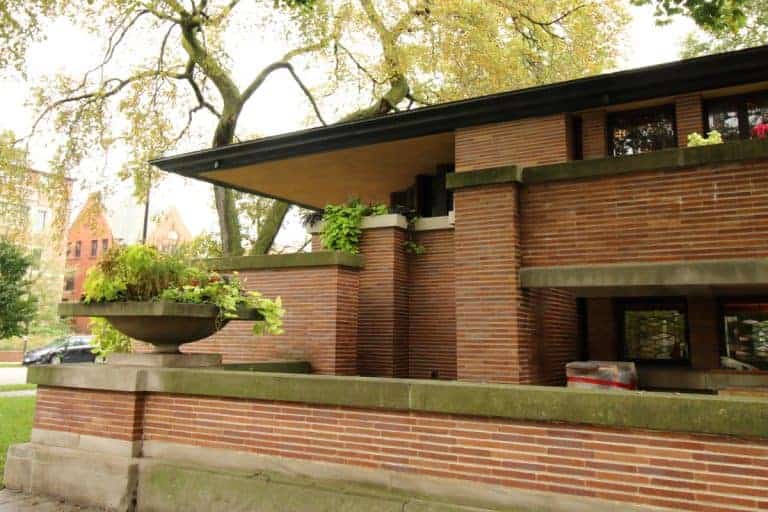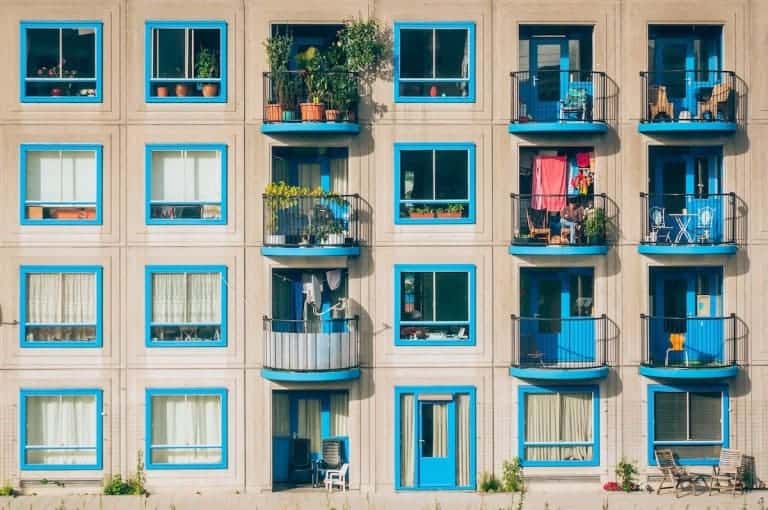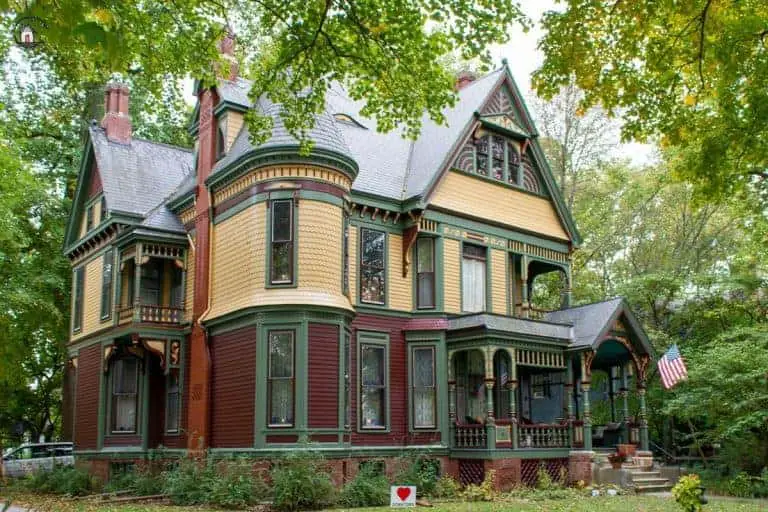If you are considering putting in an above ground pool, there are a few decisions to be made before you will be floating around on an inflatable slice of pizza.
Yeah, it’s a thing, see:
But I probably shouldn’t distract you with pool toys before we talk about the important stuff – how to actually choose an above ground pool. There are actually a lot of options when it comes to choosing your pool, and it’s not something you want to regret. So choose wisely!
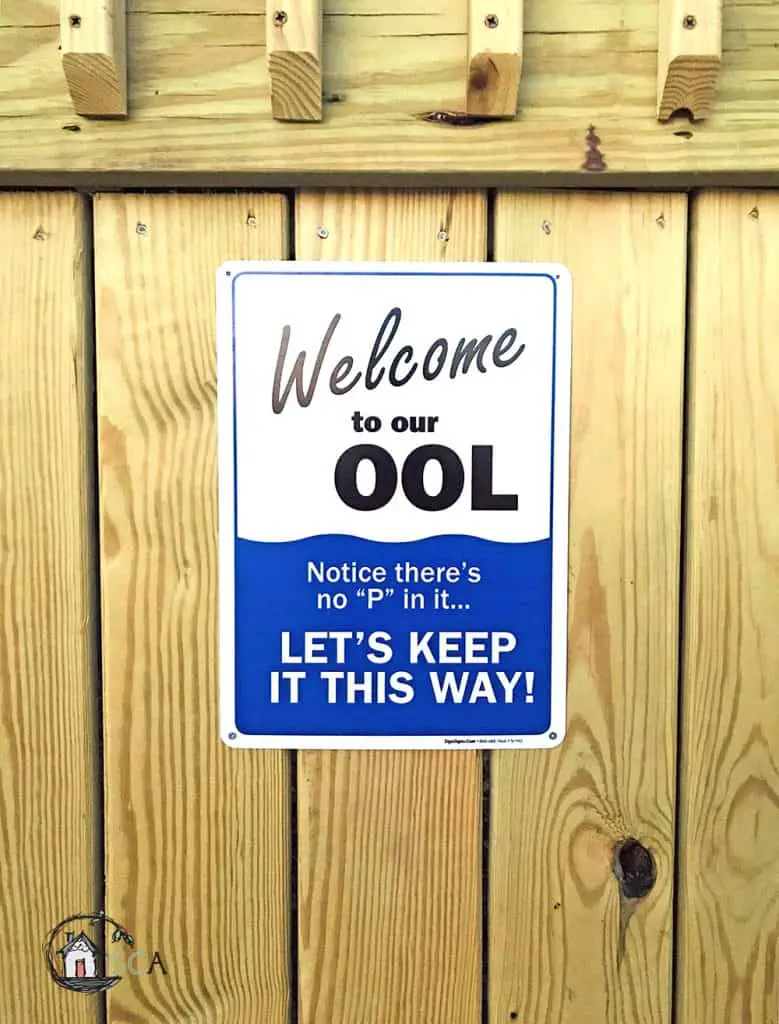
How to Choose an Above Ground Pool
An above ground pool can provide years of family fun, outdoor activity and enjoyment. Hopefully this guide eliminates some of the guesswork for you when it comes to how to choose an above ground pool.
Keep in mind that you should always contact the building and zoning office in your town to determine the local laws and ordinances for installing an above ground pool. They often require you to get a permit and submit a drawing showing the proposed location of your pool.
Evaluate your Backyard
Before you even begin looking at pools, you first need to make sure you should be installing a pool in your backyard.
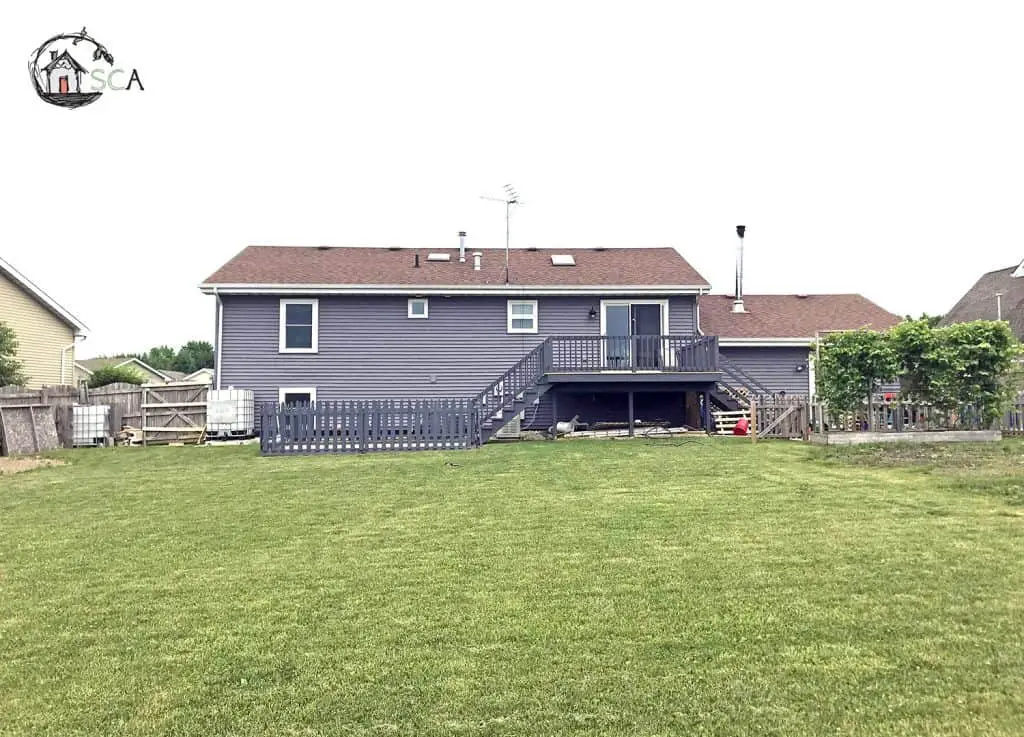
Things to consider before you start shopping:
- Is your backyard shady most of the time? If so, a pool might not be a great choice. Not only do you want some sun on your pool to warm the water up in the summer, falling leaves are a huge nuisance to a pool. Also, tree roots can make their way to the surface and tear a pool liner.
- Do you have power lines running through your yard? You should not install a pool under power lines, and your local building code may even have ordinances dictating how far away from power lines a pool must be located.
- Where are your underground utilities located? If they run under where you plan to put your pool, that can cause issues down the road. Especially if you have a septic system. Thankfully we only had a drain pipe from our sump pump that was along the edge of where the pool would go and it was easy to relocate along the side of the pool.
- How large is your yard? Pools should be a certain distance from any built structure and from your property lines. Your town will most likely have ordinances for that as well.
- A pool filter requires an electrical connection. If you are installing a permanent pool, you want the filter to be away from the house so you don’t hear it running. This means burying an electrical line. If you have underground utilities in your yard, it may impact or prevent you from running power to your pool filter.
Budget
The next step in choosing an above ground pool is to determine your budget. Do you have $500 to spend? $5,000? Whatever your budget is, keep in mind that the cost of installing a backyard pool isn’t limited to the actual cost of the pool. There are additional expenses that you may not have thought about.
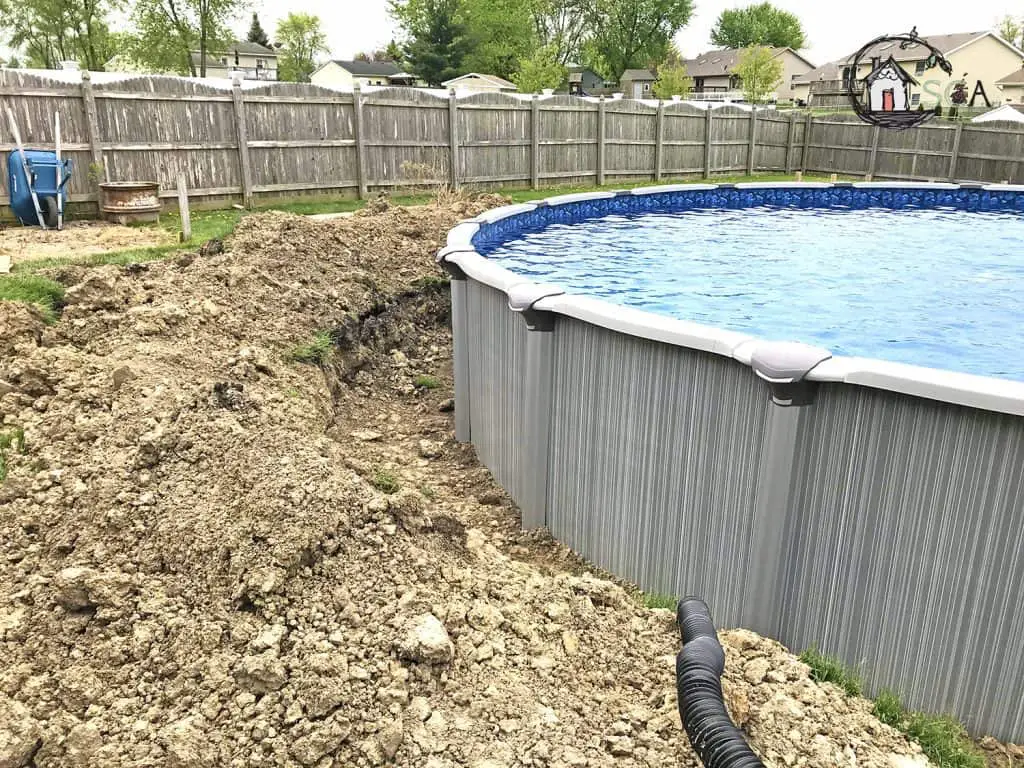
- If your backyard isn’t level, you will need to excavate part of it and level it out. An uneven pool is a recipe for disaster. Water is heavy, and pools are designed for the water to be evenly distributed on all sides. If one side has more water, you will likely experience a blowout. Maybe not right away, but eventually.
- Even for the lowest cost pool, the liner will last longer if you set the pool in a bed of sand, so factor in the cost of sand.
- If you live in a place where water is expensive, it can cost you a few hundred dollars just to fill the pool the first time. And every year afterwards you will have to at least partially fill it back up. Ours is a large pool but it cost us $300 to fill it up the first time.
- Pool chemicals. The larger the pool, the more chemicals you need. And you will need a lot in the beginning to get the fresh water balanced.
- You know you won’t be able to own a pool without buying some pool toys!
- How will you access your pool? Will you just use the ladder that comes with it or will you want a deck from your house to the pool? A deck can run anywhere from $2,000-$10,000 depending on the size.
- Will you need a landscape border around your pool? It can cost a few hundred to a few thousand dollars depending on what kind of border you want and whether or not you will DIY it or hire someone.
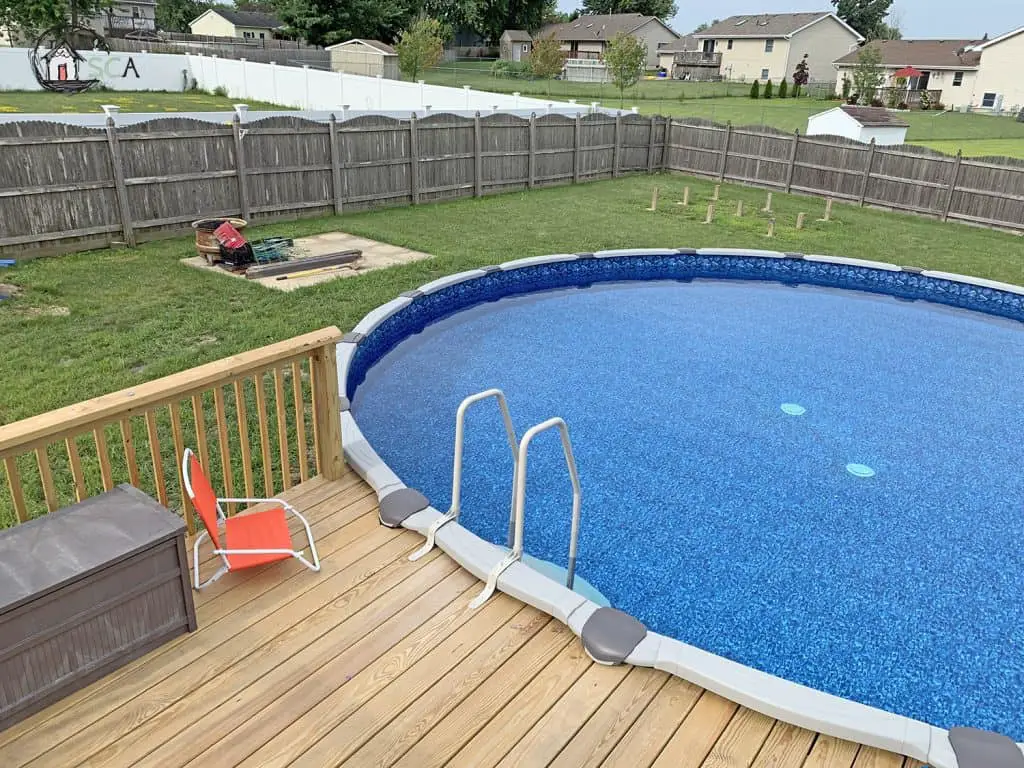
Cost to Own
Many of the cost to own considerations were mentioned above in the budget part because they really do tie together. Some of the items you need to budget for annually, are also a part of the initial cost of installing a pool.
- Chemicals: We were spending roughly $50-$75/mo on chemicals while the pool was open. You will also need extra chemicals to close the pool and prep the water for winter and extra to open the pool to get the water balanced initially.
- Filter: Your pool filter may have an internal filter that can be cleaned so you only have to replace it every couple of years, but you will have to replace them. Ours was $90 to replace.
- Toys: The reality is that most inflatable pool toys don’t last and you end up having to replace them every year. You may be able to get a few years out of them if you store them right, but usually they don’t last too long. And of course you will want a welcome to our ool sign.
- Water: In the spring when you open your pool you will likely have to add water, as well as during the summer season as the heat and humidity lower the water level. If your water is expensive, you could see a $20-$50 monthly increase or more during the summer months.
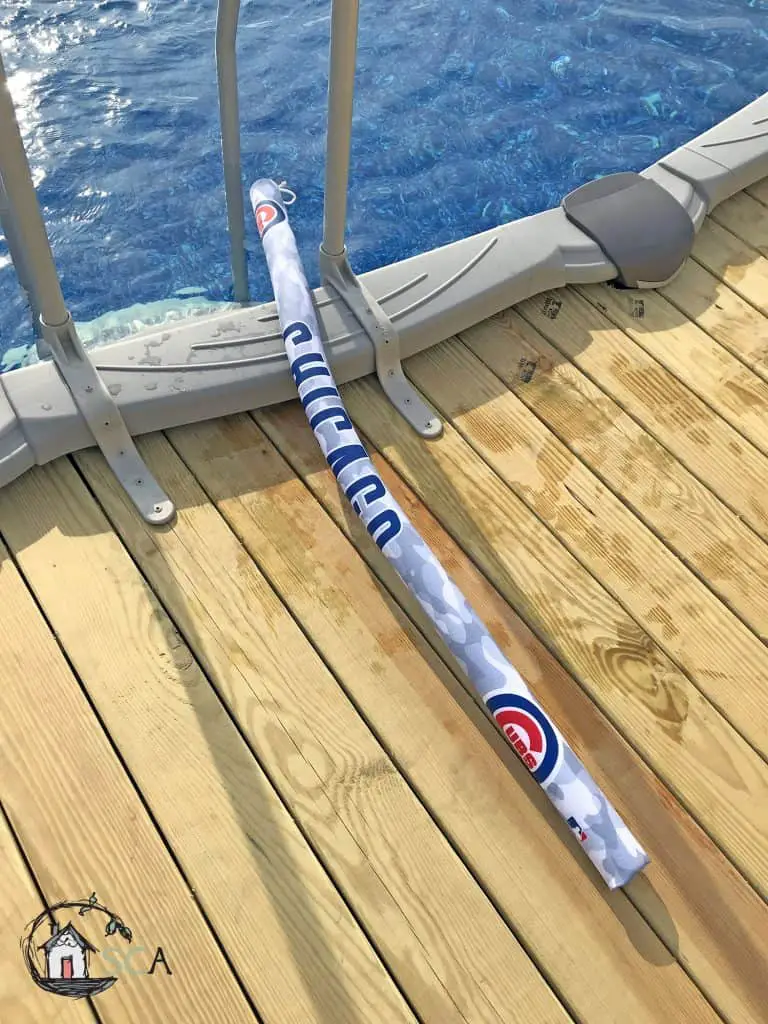
Temporary or Permanent
You can head on over to Walmart or Amazon and get an easy set style above ground pool for a few hundred dollars. These types of pools may not withstand winter weather so you probably need to take them down every season.
Walmart does have some more expensive DIY pool kits in the $1,500-$3,000 range that are more permanent, but I’m not sure how well they will stand up to more extreme weather.
Obviously your budget will play a part in whether or not you install a permanent pool, but you also may simply not want the commitment that a permanent pool brings with it to maintain every year.
With a temporary pool you can decide whether or not to put it up and it’s a lot less work to dispose of should you change your mind and decide that a pool is too much work.
Also, with a permanent pool, it can affect your home value when you go to sell. If you live in an area where summers are short and not a lot of people have pools, a buyer may not want to deal with a pool and therefore not even consider your home or make you a lower offer because they feel they will have an extra expense to get rid of the pool.
Size and Shape
Once you have evaluated your property for feasibility, decided on your budget, chosen a type of above ground pool (temporary or permanent) now you have to decide the size and shape.
Of course budget will play a big part in this as well because the price will be higher for a larger pool. Your cost to own will be more as well because it requires more water and more chemicals to maintain.
Beyond that, size and shape will also be determined by you backyard size and how many people will be using the pool.
If you have a large family or a lot of friends and neighbors who spend time at your house (or will once the pool is installed), you will want to consider a larger pool. If it’s just two people using the pool most of the time, you may not need a large above ground pool.
There are two above ground pool shapes – round and oval (some of the oval ones are kind of rectangle-ish). Generally round pools give you the most bang for your buck. In most cases you will find a round pool more affordable.
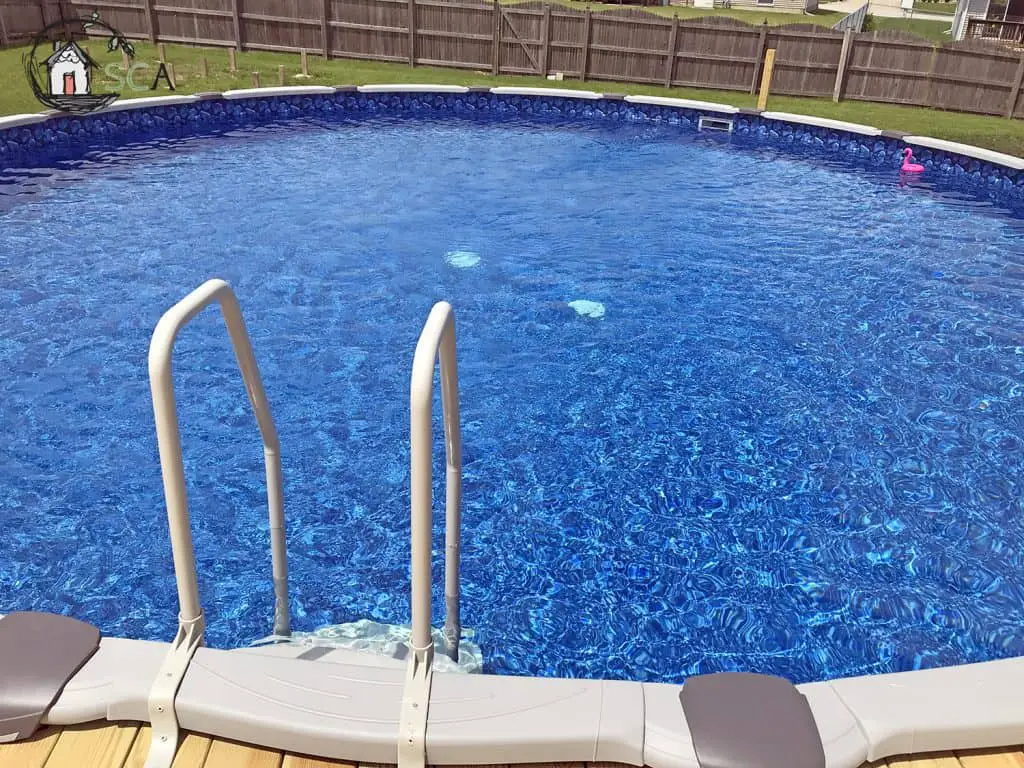
A round pool is also more structurally sound because the water puts even pressure all the way around. An oval pool may need side supports to keep the sides from bowing out.
Round pools range in 3′ increments from around 18′ across to 27′ across. You can get a 30′ pool in some brands, but usually those are significantly more expensive. For a basic pool you will probably spend $200-$300 more for the next size up. So if the 18′ pool is $1,500, a 21′ pool will likely be around $1,700. This will vary based upon the brand and quality of the pool you choose as well.
Some standard oval pool sizes are: 12′ x 23′, 15′ x 26′ and 15′ x 30′.
Depth
Pools depths don’t vary too much with the permanent pools. You can get them in 48″, 52″ or 54″ wall heights. Temporary pools have more variety in the depth.
If you plan to stay in your home indefinitely, and are installing a permanent pool, the deeper pool is the way to go if you can afford it, especially as kids get older.
Brand
For temporary pools, Intex is a major brand that you can pretty much find everywhere. They have a wide variety of types for just about every budget.
When it comes to permanent pools, there are a lot of different brands and your local pool store will probably only carry a few different ones. I can’t really say that one brand is better than the other, but I would recommend talking to someone at your local store and getting their opinion. They may be able to give you the pros and cons of each brand.
We put in a Vogue pool. Our local pool store carries a number of different brands but this was the one recommended to us.
Quality
Pool quality is more dependent on the materials the pool is made from than the actual brand you choose. And it will reflect in the cost.
Pools that you assemble yourself with an inflatable, PVC or metal frame are just not going to be as high a quality as a permanently installed pool with resin top rails and posts.
Resin is a better quality material because it won’t rust, dent or ding the way metal will. You will generally find the following quality options with a permanent above ground pool:
- Metal walls, metal rails, metal posts – lowest quality.
- Metal walls, resin rails, metal posts – mid-range quality.
- Metal walls, resin rails, resin posts – best quality.
We chose a mid-range pool with resin rails and post caps and metal posts.
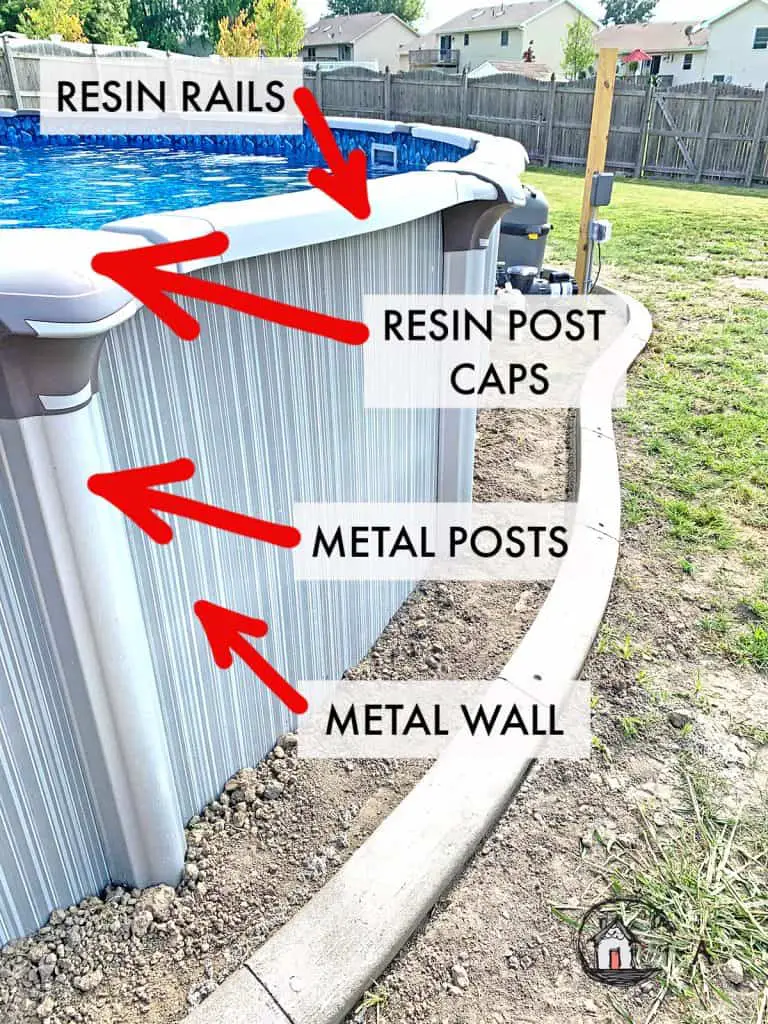
Design
Every pool brand has a slightly different look and design, and honestly that may be how you decide the brand that you choose. The metal walls have patterns in them that look like wood, metal, tile, and just random patterns. They also vary in color with grey being the most common but some tan shades as well.
Choose the design that you think will look good in your backyard provided it meets the quality and budget standards that you have set.
We thought that the grey stripes would look great with our grey house.
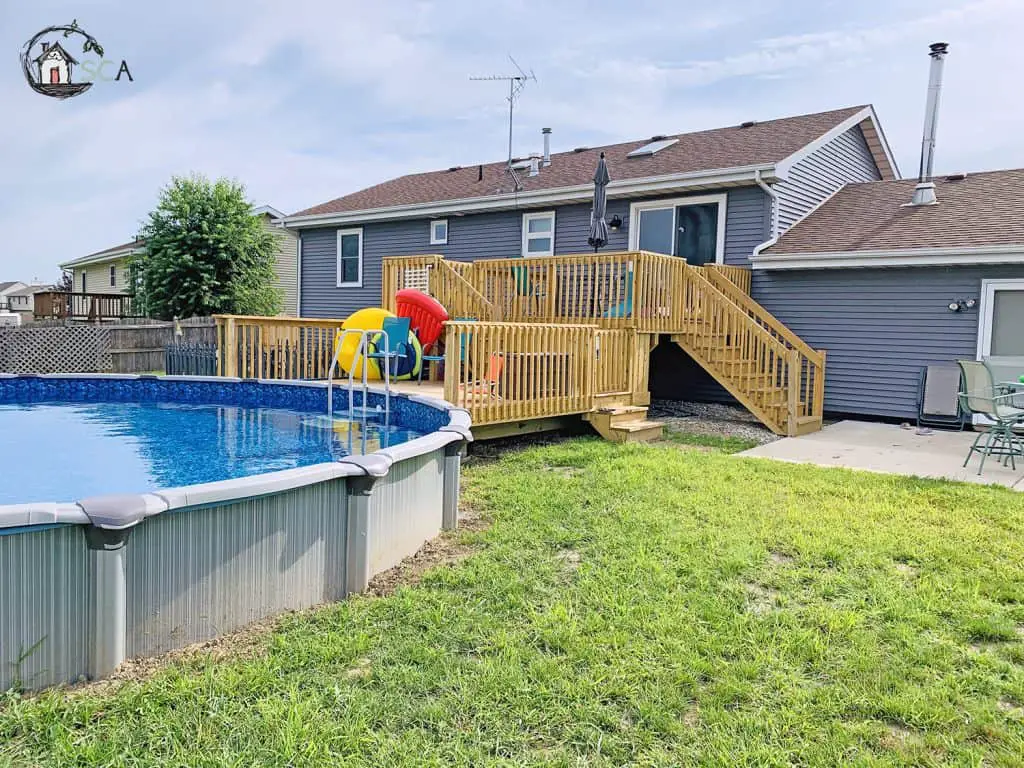
Chlorine Alternatives
Most above ground pools use chlorine to treat the water and keep it balanced and clean. But some people do opt to use a salt water system instead of chlorine. A salt water system, however, will add a significant cost to your above ground pool.
A salt water system uses a lot less chlorine than a traditional pool but also may require more maintenance to balance the water.
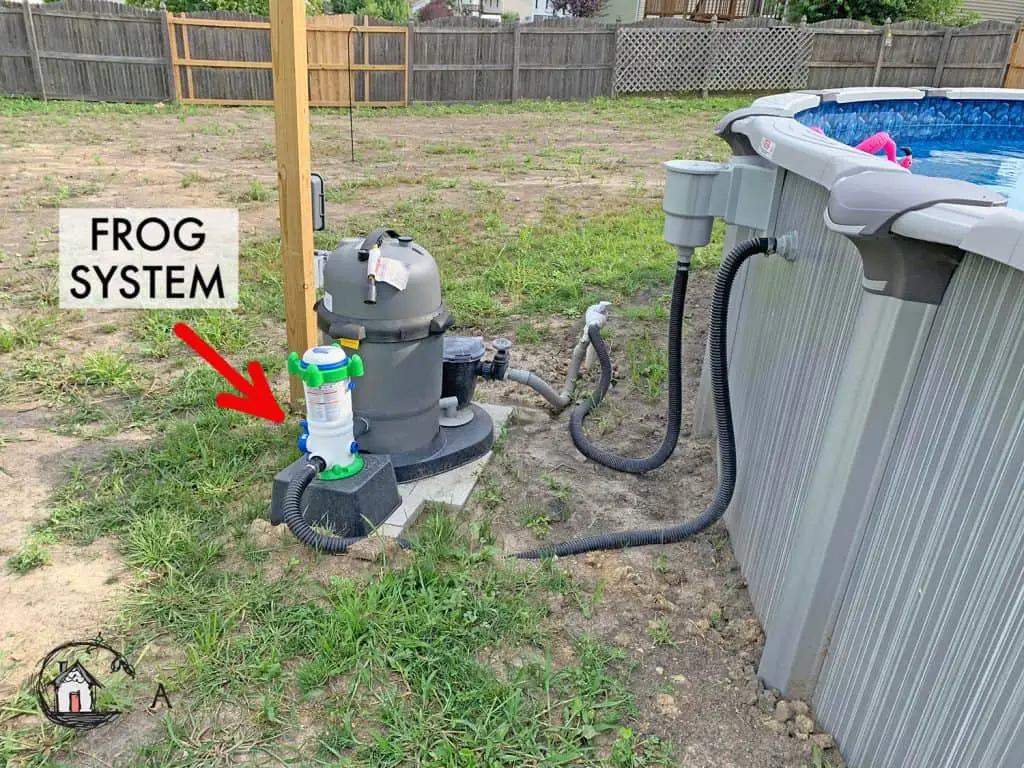
We have a Frog Mineral System on our filter that dispenses the chlorine and is supposed to use 50% less chlorine than a traditional pool setup.
Our pool was fairly easy to regulate despite last year being our first year as pool owners. And I do think it used less chlorine, the water didn’t have the same strong chlorine smell as other above ground pools I have used.
Final Thoughts
An above ground pool can be a fantastic addition to your family. It provides lots of opportunities for stay-cations and helps keep the kids active and off of their devices. A pool is a great way to get low impact exercise in as well.
But a backyard pool can end up being a huge project depending on how much you choose to do with it. It can become an integral part of your backyard landscaping or just a temporary thing that you take down every fall.
One thing is for sure, it’s great fun, and we definitely don’t regret our above ground pool.
